Subscribe for email alerts
Donate to Science & Enterprise
|
By Alan, on March 15th, 2022  (Shutterbug75, Pixabay. https://pixabay.com/photos/camera-aperture-digital-camera-dslr-1239384/) 15 Mar. 2022. I had photographic assignment with tight deadlines that took up most of the day, so we’ll not have new story today on Science & Enterprise. We’ll resume our regular posting tomorrow.
The project, by the way, was a news conference with Ukraine’s ambassador to the U.S. and the Ukrainian Catholic archbishop of Philadelphia, at National Press Club in Washington, D.C. Here’s a link to the photos.
* * *
By Alan, on March 14th, 2022  (Pexels.com) 14 Mar. 2022. A home-based clinical trial is set to begin testing digital therapies for relieving anxiety and managing other health challenges among cancer patients. Blue Note Therapeutics, a developer of digital therapies for managing cancer-related stress, is conducting the trial with Curebase, a decentralized clinical trials company. Both businesses are in San Francisco.
Blue Note Therapeutics provides digital treatments by prescription as mobile apps to help people with cancer cope with their conditions. The company says says it applies principles of cognitive behavioral stress management, a form of cognitive behavioral therapy, to help cancer patients cope with mental health effects of their disease. Cognitive behavioral therapy seeks to identify negative or false patterns of beliefs, then test and restructure them. Addressing these patterns, say therapists, allows the individual, working with the therapist, to develop healthier ways of thinking that replace negative beliefs.
For people with serious diseases, cognitive behavioral stress management aims to provide tools for dealing with mental strains that accompany their physical disease symptoms. The tools include steps for aiding relaxation, understanding and restructuring negative thought patterns, and improving interpersonal skills. In Jan. 2021, Science & Enterprise reported on Blue Note’s collaboration with advocacy groups to provide electronic therapies for helping cancer patients deal with stresses from Covid-19.
Testing two Blue Note apps
Curebase offers systems for conducting decentralized clinical trials, where clinicians and patients provide data from remote locations rather than traveling to medical centers. The company says its eClinical software enables investigators to establish remote sites for data collection from telemedicine and wearable devices, gain informed consent from participants, and protect privacy. Curebase says its virtual sites make it possible to expand clinical trial participation to any part of the U.S., and include demographic groups often under-represented in trials.
Blue Note’s clinical study is using Curebase’s technology to test two of its apps, Attune and Cerena. Attune, says Blue Note, offers a personalized therapy based on cognitive behavioral therapy and stress management for cancer patients to build skills to help cope with anxiety and depression. The company says Cerena helps cancer patients deal with related health challenges that contribute to stress.
The clinical trial is enrolling adult cancer patients in stages 1 through 3, from an early localized tumor to spreading to nearby tissues or lymph nodes. Some 352 participants are randomly assigned to use from home either the Attune or Cerena app. Each app has 10 sessions of about 60 minutes in length, with related exercises. Participants are then tracked for 12 weeks, with researchers looking mainly at changes in scores in a standard eight-item scale for anxiety. The study team is also asking participants to report on several other mental health measures, rate the usability of the apps, and indicate other use of health care facilities.
“Patients living with cancer frequently experience stress, anxiety, and depression,” says Blue Note CEO Geoffrey Eich in a statement. Referring to the decentralized trial, Eich adds, “Using the latest in digital technology, we’re now able to offer patients a convenient way to participate and what we hope will be improved physical and mental health.”
More from Science & Enterprise:
We designed Science & Enterprise for busy readers including investors, researchers, entrepreneurs, and students. Except for a narrow cookies and privacy strip for first-time visitors, we have no pop-ups blocking the page, nor distracting animated GIF graphics. If you want to subscribe for daily email alerts, you can do that here, or find the link in the upper left-hand corner of the desktop page. The site is free, with no paywall. But, of course, donations are gratefully accepted.
* * *
By Alan, on March 12th, 2022 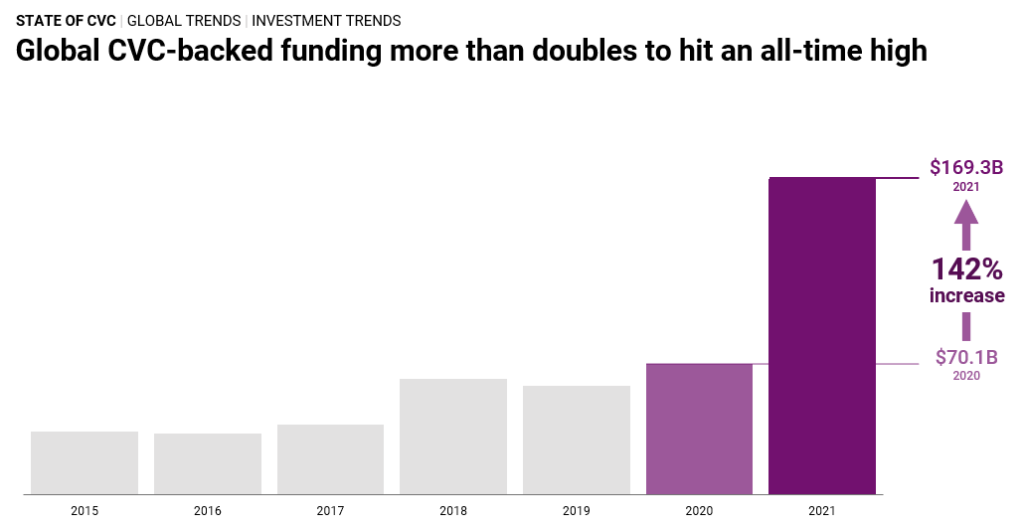 Click on image for full-size view (CB Insights) 12 Mar. 2022. Venture capital is a topic we report on often at Science & Enterprise, both individual finance deals and overall trends. One source of venture funds making a substantial presence last year is investment divisions of corporations, known as corporate venture capital or CVC. Earlier this month, technology market intelligence company CB Insights issued a report on the state of corporate venture capital (registration required), which points out its growing impact.
In 2021, according to CB Insights, total investments from CVCs reached $169.3 billion for the year, up from $70.1 billion in 2020. Total investment dollars stayed relatively stable from 2018 to 2020, but the 2021 total is a 141.5 percent increase from the previous year. The number of new venture investment deals by CVCs also jumped markedly last year to 221, a 52 percent increase from 2020, after a two-year decline.
The CB Insights report also lists the most active CVCs in the last quarter of 2021, which includes two investor names familiar to regular readers of Science & Enterprise. The report says Google Ventures, known as GV, was the most active CVC in the fourth quarter supporting 27 companies. In July 2021 we reported on GV’s participation in the $200 million second round financing for Prime Medicine, spun-off from the Broad Institute, that conducts precise base-pair genetic editing.
Another of the most active CVCs is Alexandria Venture Investments, supporting 15 start-ups in Q4. Just this week, Science & Enterprise reported on $40 million in early funds for Creyon Bio, a new company designing RNA components on demand for therapeutics, with Alexandria Venture Investments taking part in that round.
More from Science & Enterprise:
We designed Science & Enterprise for busy readers including investors, researchers, entrepreneurs, and students. Except for a narrow cookies and privacy strip for first-time visitors, we have no pop-ups blocking the page, nor distracting animated GIF graphics. If you want to subscribe for daily email alerts, you can do that here, or find the link in the upper left-hand corner of the desktop page. The site is free, with no paywall. But, of course, donations are gratefully accepted.
* * *
By Alan, on March 11th, 2022  (Gerd Altmann, Pixabay) 11 Mar. 2022. The Cleveland Clinic and PathAI, a company developing digital pathology systems, are partnering on creating new diagnostic and analytical algorithms. Cleveland Clinic is taking an equity stake in PathAI, but other financial and intellectual property details of the five year collaboration were not disclosed.
PathAI develops digital pathology tools based on artificial intelligence for research and clinical applications. The company’s main focus is precision medicine that relies on genomics-based diagnostics tied to personalized treatment plans. A key goal of PathAI’s systems is to minimize subjectivity that reduces the accuracy of findings. The company says its systems combine A.I. with image analysis to improve the reproducibility of diagnostics from pathological samples, and help analytics based on digital pathology better predict outcomes of therapies.
“Accelerate innovation in precision pathology”
In the partnership, Cleveland Clinic and PathAI plan to digitize hundreds of thousands of pathology specimens, producing millions of slide images covering multiple diseases. The digitized images, say the parties, will then be linked to clinical and molecular data to produce datasets for research using PathAI’s pathology algorithms and other systems. Data produced from the collaboration will be used to further refine PathAI’s algorithms, with Cleveland Clinic’s professional staff verifying the algorithms work as intended. In addition, PathAI will educate Cleveland Clinic staff in using A.I. pathology-based diagnostics in patient care.
“By doing this work,” says Brian Rubin, chair of pathology and laboratory medicine at Cleveland Clinic in a statement, “we’re able to maximize the value of machine learning for our patients and fuel deeper innovation that can result in better outcomes.”
Andy Beck, CEO and co-founder of PathAI adds, “We see an incredible opportunity to accelerate innovation in precision pathology and to use our strengths to bridge communities in the health care ecosystem including patients, biopharma, and academic research.”
PathAI is a six year-old company founded by Beck, a pathologist on the faculty at Harvard Medical School, and MIT data scientist Aditya Khosla. In June 2016, soon after starting up PathAI, Science & Enterprise reported on Khosla and colleagues developing an inexpensive eye-tracking device called iTracker that uses a tablet camera, aided by image analysis and crowd-sourced machine learning algorithms.
More from Science & Enterprise:
We designed Science & Enterprise for busy readers including investors, researchers, entrepreneurs, and students. Except for a narrow cookies and privacy strip for first-time visitors, we have no pop-ups blocking the page, nor distracting animated GIF graphics. If you want to subscribe for daily email alerts, you can do that here, or find the link in the upper left-hand corner of the desktop page. The site is free, with no paywall. But, of course, donations are gratefully accepted.
* * *
By Alan, on March 10th, 2022 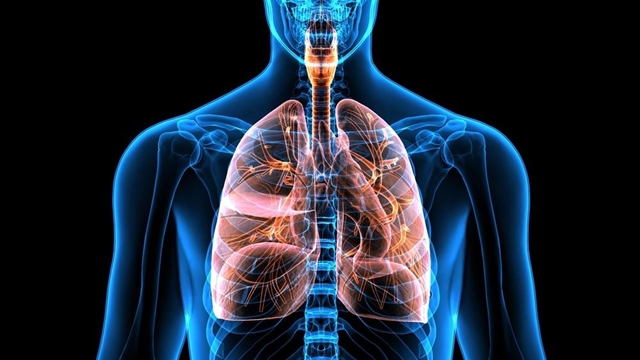 (NIH.gov) 10 Mar. 2022. A medical technology company is receiving a small-business grant to advance a wearable at-home lung monitoring system for people with respiratory diseases. National Science Foundation is providing more than $990,000 to Strados Labs Inc. in Philadelphia, to fund the first year of the company’s two-year R&D project.
Strados Labs is developing a sensor device called the Resp, worn on the chest in a clinic or at home. The Resp, says Strados Labs, provides continuous, real-time monitoring of a patient’s lungs, collecting acoustical data from more than 1 million data points. Data collected by Resp are uploaded to the cloud, where the patient’s lung condition can be assessed and analyzed over time. The company says the device offers 220 hours of continuous data without intervention from the patient. Resp also uses noise cancellation, says Strados Labs, to capture only lung acoustics and not the patient’s speech.
The NSF award is the second part of the agency’s two-phase support for the Resp device. In Aug. 2020, Strados Labs received a $224,500 award from NSF to develop the company’s basic lung monitoring technology, including machine learning algorithms for analyzing acoustical data and refining assessments for physicians. The new grant supports advances in the device and back-end system’s designs to provide more reliable patient measurements and assessments, improve noise reduction, upgrade data annotation and analysis, and conduct further testing to validate the system’s usability and safety.
Further develop a standardized database
Strados Labs says the new NSF funds will also enable the company to refine its databases and analytical engines. “This grant,” says co-founder and CEO Nick Delmonico in a company statement released through Cision, “will be used in the further development of a standardized database for things like wheezology and coughology, acoustic biomarkers to predict disease progression and personalize care.”
Strados Labs was formed in 2016, but began ramping up its activity in the past two years. NSF awarded its first R&D funds in Aug. 2020, and the Resp system received a CE mark in Nov. 2021 that authorizes marketing of the system in European Union countries. In Jan. 2022, Strados Labs raised $4.5 million in advance of the company’s first venture funding round.
The NSF award is made under the agency’s Small Business Innovation Research or SBIR program that sets aside funds for U.S.-based companies commercializing scientific research. SBIR grants are usually made in two phases, a first phase to prove the concept, after which a company can apply for additional funds to build a prototype or complete preclinical work. NSF says it awards more than $200 million each year in SBIR grants to some 400 start-up companies.
More from Science & Enterprise:
We designed Science & Enterprise for busy readers including investors, researchers, entrepreneurs, and students. Except for a narrow cookies and privacy strip for first-time visitors, we have no pop-ups blocking the page, nor distracting animated GIF graphics. If you want to subscribe for daily email alerts, you can do that here, or find the link in the upper left-hand corner of the desktop page. The site is free, with no paywall. But, of course, donations are gratefully accepted.
* * *
By Alan, on March 9th, 2022 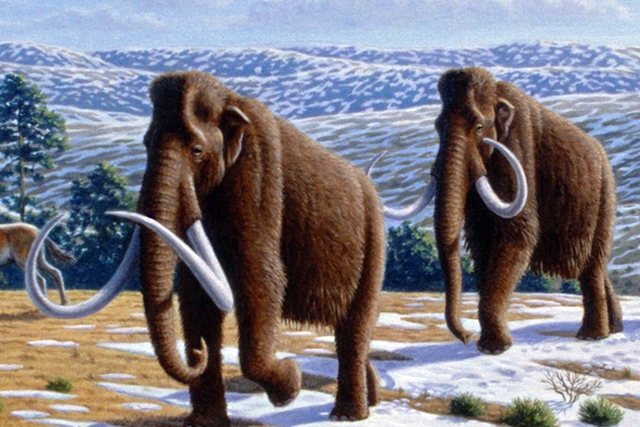 Woolly mammoth illustration (Mauricio Antón, Wikimedia Commons. https://commons.wikimedia.org/wiki/File:Woolly_mammoth_(Mammuthus_primigenius)_-_Mauricio_Ant%C3%B3n.jpg) 9 Mar. 2022. A biotechnology start-up aiming to restore extinct animal species with gene editing is raising $60 million in its first venture funding round. Colossal Biosciences in Dallas, a company based on genetics research at Harvard University and elsewhere, is a six-month old enterprise whose first project is restoration of the woolly mammoth, a large extinct prehistoric species.
Colossal Biosciences plans to restore extinct species with Crispr, or clustered, regularly interspaced short palindromic repeats, a technique for editing genomes based on bacterial defense mechanisms that use RNA to identify and monitor precise locations in DNA. The actual editing of genomes with Crispr uses enzymes such as Crispr-associated protein 9 or Cas9. RNA molecules guide the editing enzymes to specific genes for removal or changes, where the technique is now used for therapies, diagnostics, and genetically engineered plant crops and farm animals.
The company says climate change, chemical pollution, and practices like overfishing and deforestation are accelerating the disappearance of many plant and animal species, with potentially devastating effects on the world’s ecosystems. Colossal Bio says it’s confronting the problem with Crispr and other genetic engineering techniques to restore extinct species as close as possible to their original forms.
Hybrid elephant species with woolly mammoth traits
Colossal Bio’s first project is the woolly mammoth, a large prehistoric mammal that lived in northern tundra regions until extinction, estimated around 1700 BC. While extinct, the woolly mammoth shares an almost identical genome, a 99.6 percent match, with today’s Asian elephant, a now endangered species that inhabited the earth at the same time. As reported by Science & Enterprise in October 2021, Colossal Bio is sequencing the genome of the Asian elephant, as well as African forest and savannah elephants, for reference genomes maintained by the Vertebrate Genomes Project.
Colossal Bio aims to recreate the same basic traits as the woolly mammoth, a cold-resistant herbivore, that can survive in tundra regions like the original. The company plans to edit the Asian and African elephant genomes to produce the genetic code for a cold-resistant elephant hybrid, and later an embryo. Colossal Bio says it will implant the embryo into an African elephant acting as surrogate mother. African elephants are larger and less endangered than the Asian variety.
“We’re making the path to de-extinction and species preservation a reality,” says Colossal Bio co-founder and CEO Ben Lamm in a company statement released through Business Wire, “by bringing the planet one step closer to reversing the downward trend of ecosystem degradation and the staggering loss of biodiversity through cutting edge genetic tools. The technologies and solutions developed through our mammoth restoration project will not only return Arctic elephants to the tundra, but will target larger implications for conservation, science, and humanity.” Harvard Medical School geneticist and serial entrepreneur George Church is also a co-founder of the company.
Colossal Bio is raising $60 million in its first venture financing round, led by early-stage environmental technologies investor At One Ventures in San Francisco and Pittsburgh financier Thomas Tull. Taking part in the round are venture investors and businesses Untamed Planet, Animoca Brands, Breyer Capital, Animal Capital, Bold Capital, First Light Capital Group, Boost VC, Jazz Ventures, Builders VC, Green Sands Equity, Draper Associates, Arch Ventures co-founder Robert Nelsen, and other individuals. The company raised $15 million in seed funds in May 2021.
More from Science & Enterprise:
We designed Science & Enterprise for busy readers including investors, researchers, entrepreneurs, and students. Except for a narrow cookies and privacy strip for first-time visitors, we have no pop-ups blocking the page, nor distracting animated GIF graphics. If you want to subscribe for daily email alerts, you can do that here, or find the link in the upper left-hand corner of the desktop page. The site is free, with no paywall. But, of course, donations are gratefully accepted.
* * *
By Alan, on March 8th, 2022 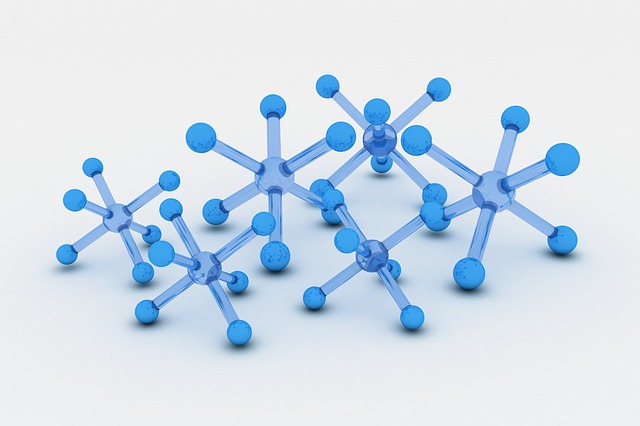 (Fernando Zhiminaicela, Pixabay. https://pixabay.com/illustrations/chemical-molecular-atom-medicine-3086130/) 8 Mar. 2022. A new company is applying artificial intelligence and other computational techniques to quickly design and discover RNA components for precision therapies. Creyon Bio Inc., a two year-old enterprise in San Diego, began operating today in public, and raised $40 million in its seed and first venture funding rounds.
Creyon Bio is creating a process for designing treatments for disease on demand, with specified precise therapeutic targets, mechanisms of action, and safety profiles. The company aims to short-cut conventional trial-and-error screening and optimization processes in drug discovery that can take months, and instead design new therapies from scratch. Creyon Bio’s technology is based on oligonucleotides, short sequences of nucleic acids including RNA. The company says oligonucleotide-based medicines, or OBMs, can be building blocks for a range of treatments involving RNA: antisense oligonucleotides that alter RNA to reduce or modify protein expression, small interfering RNA to silence genes, gene-editing molecules, and single-strand aptamer targets.
Creyon Bio says its process applies machine learning algorithms and other techniques from computational biology and chemistry to design OBMs. These algorithms, says the company, connect its custom-made datasets from biophysics and chemistry to models of efficacy and safety. “Our unique datasets,” says Swagatam Mukhopadhyay, Creyon Bio’s co-founder and chief scientist in a company statement, “are optimized for efficiently building generalizable machine learning models, and we constantly refine our models through active learning. The Creyon platform ultimately allows us to create safe and effective OBMs with exceptional efficiency, building a world where there is no gap between diagnosis and treatment.”
Rare and more common diseases
The company has not yet specified therapeutic targets or pipeline. But Creyon Bio’s co-founder and CEO Chris Hart suggests the company can address both rare diseases and more common disorders with specific molecular targets. “Our mission is to design and offer predictably safe and effective options for patients with any disease amenable to OBM therapies,” notes Hart. “No matter how rare or common their condition, no matter the size of the patient population, we believe that the Creyon platform is creating a fast, efficient, and equitable path to engineering new medicines for patients.”
Creyon Bio is raising $40 million in early funds divided between seed and first venture rounds. The financing is led by Silicon Valley technology investors DCVC Bio in Palo Alto and Lux Capital in Menlo Park. Taking part are Casdin Capital, Alexandria Venture Investments, and BioBrit. Creyon expects to use the funds to refine the company’s technology, hire staff, and start building a pipeline.
The goal of rapid drug design on demand with artificial intelligence may be difficult to achieve. Insilico Medicine in Hong Kong, another company using algorithms to design drugs from scratch, needed 18 months to discover a new oral treatment for idiopathic pulmonary fibrosis. Much of that time, as reported by Science & Enterprise in Feb. 2021, was devoted to preclinical lab and animal tests.
More from Science & Enterprise:
We designed Science & Enterprise for busy readers including investors, researchers, entrepreneurs, and students. Except for a narrow cookies and privacy strip for first-time visitors, we have no pop-ups blocking the page, nor distracting animated GIF graphics. If you want to subscribe for daily email alerts, you can do that here, or find the link in the upper left-hand corner of the desktop page. The site is free, with no paywall. But, of course, donations are gratefully accepted.
* * *
By Alan, on March 7th, 2022 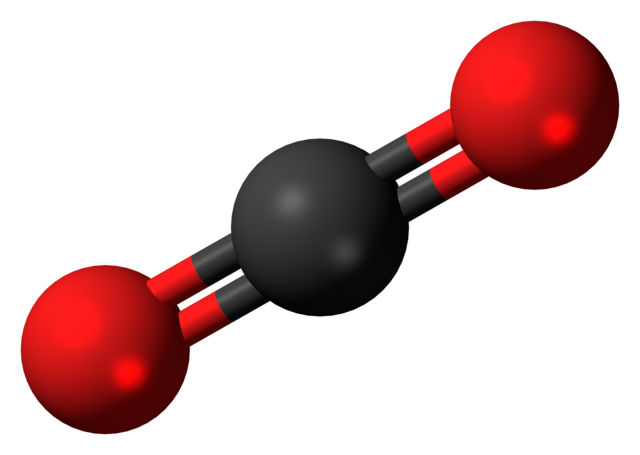 Carbon dioxide molecule model (Jynto, Wikimedia Commons. https://commons.wikimedia.org/wiki/File:Carbon_dioxide_3D_ball.png) 7 Mar. 2022. A start-up company creating a process to convert carbon dioxide into food protein elements with microorganisms is raising $7 million in seed funds. Arkeon Biotechnologies in Vienna, Austria is spun off from microbiology labs at University of Vienna studying physiological processes of archaea, ancient microorganisms harnessed to convert CO2 into amino acids that make up food.
Archaea are a type of bacteria, and early form of single cell organisms without a nucleus that predate and are believed to be forerunners of eukaryotic cells with a nucleus found in more advanced plants and animals. They’re particularly hardy microorganisms that survive in extreme environments. Microbiologist Simon Rittmann and colleagues at University of Vienna study archaea, including industrial applications of the microbe’s physiology. One of those applications is fermentation, in this case using archaea to metabolize and convert CO2 into amino acids, the basic building blocks of organic matter. Rittmann is the scientific founder of Arkeon Bio and its chief scientist.
Arkeon Bio plans to harness archaea for fermenting CO2 into 20 amino acids that comprise food products consumed by humans, with those amino acids combined into short strings called peptides. The company says it plans to capture CO2 from industrial plants for fermenting into amino acids, without taking up arable land, growing or harvesting crops, or feeding animals. Arkeon Bio says its one-step process is 20 times more efficient than photosynthesis and carbon-negative, which means it absorbs more CO2 than it produces.
“A sustainable, low-emission system”
“For the first time in history,” says Arkeon Bio co-founder and CEO Gregor Tegl in a statement emailed to Science & Enterprise, “we can turn the equation of modern food production upside down and turn a resource-intensive industry into a sustainable, low-emission system.”
Arkeon Bio is raising $7 million in its seed finance round, from environmental investors Synthesis Capital in London and ReGen Ventures in San Francisco. Synthesis Capital invests in companies aiming to transform the food system with new technologies, while ReGen Ventures backs what it calls regenerative solutions to save the planet. Arkeon Bio began operations in August 2021, and is supported by Evig Group in Berlin that incubates new companies developing alternative food technologies and processes.
In the past few months, Science & Enterprise reported on companies with new processes for producing proteins with less environmental damage. In November 2021, Tiamat Sciences in Durham, North Carolina and Brussels, Belgium raised $3 million for its plant-based technology to manufacture proteins that the company says can replace many of today’s methods for making synthetic proteins with conventional bioreactors and animals.
In August 2021, Greenlight Biosciences went public in a special purpose acquisition company or SPAC merger. Greenlight Biosciences produces synthetic ribonucleic acid, or RNA, initially for safer and sustainable pesticides for growers, but also for developers of vaccines and therapeutics in health care. The company says it uses a cell-free process to produce RNA strands from enzymes programmed like chemical templates.
More from Science & Enterprise:
Update, 8 Mar. 2022: Corrected spelling of company co-founder’s name.
We designed Science & Enterprise for busy readers including investors, researchers, entrepreneurs, and students. Except for a narrow cookies and privacy strip for first-time visitors, we have no pop-ups blocking the page, nor distracting animated GIF graphics. If you want to subscribe for daily email alerts, you can do that here, or find the link in the upper left-hand corner of the desktop page. The site is free, with no paywall. But, of course, donations are gratefully accepted.
* * *
By Alan, on March 7th, 2022 – Contributed content –
 (Vlada Karpovich, Pexels. https://www.pexels.com/photo/young-lady-using-laptop-at-table-in-modern-workspace-4050320/) 7 Mar. 2022. Whether you’re working towards getting your business off the ground, or you’re just wanting to shake things up a bit with your regular job. There is no doubt about it that in order to tolerate those 8+ hours of work, you’re going to have to be comfortable. Over half of your life is spent working, so it’s crucial that it’s at least spent being in comfort, right? Here are some helpful tips for getting more comfortable while you’re working.
Look into adjusting your hours
If you own your own business then you already know that you have fairly flexible hours. But if you work for an employer, it may be helpful to ask your manager if it’s possible to adjust your hours. Maybe you can begin work before the bustle or the day starts, or even show up a tad later. Looking into the right hours that most suit your comfort and your environment may be one of the best ways to get you to work more efficiently and comfortably.
Create visual barriers
Sometimes it’s difficult to feel comfortable while working due to the entire workplace in general. If you have a home office, then this could be great as it means that you get the chance to redecorate your office. If you work for an employer and need to physically go to work, then something like this could be a bit more of a challenge. Try to look into freshening up your desk and the workspace surrounding it by adding some nice small divers. This could be something such as plants. Plants are known for making people feel both physical and mentally better as it brings in that wonderful element of nature.
Look into ergonomic furniture
Whether you’re a business owner or not, there is no denying that bad office furniture can make anyone just feel so stiff and physically uncomfortable. So why not invest in furniture that is meant to help? This can include anything from 12 conference table, desks, and even office chairs. It’s crucial to get yourself comfortable since you’re working long hours. So you absolutely should not skip this when it comes to your physical comfort levels.
Give your eyes a break
Just like your body and brain needs a break from the work you’re doing, the same can be said about your eyes as well. The blue light that your screen emits isn’t exactly the best for your eyes, especially if you’re looking at this for a long time through the day. Blue light causes you to squint your eyes and strain them, and you may be doing this without realizing it. If possible, try to take a 20 second break every 20 minutes.
Soak up enough sun
Not only is the sunlight a free source of light for the office, but it does so much more. Sunlight provides Vitamin D, and this is needed for boosting your mood. Make sure you soak up enough sunlight each day. This is going to help you stay in a great mood.
* * *
By Alan, on March 5th, 2022 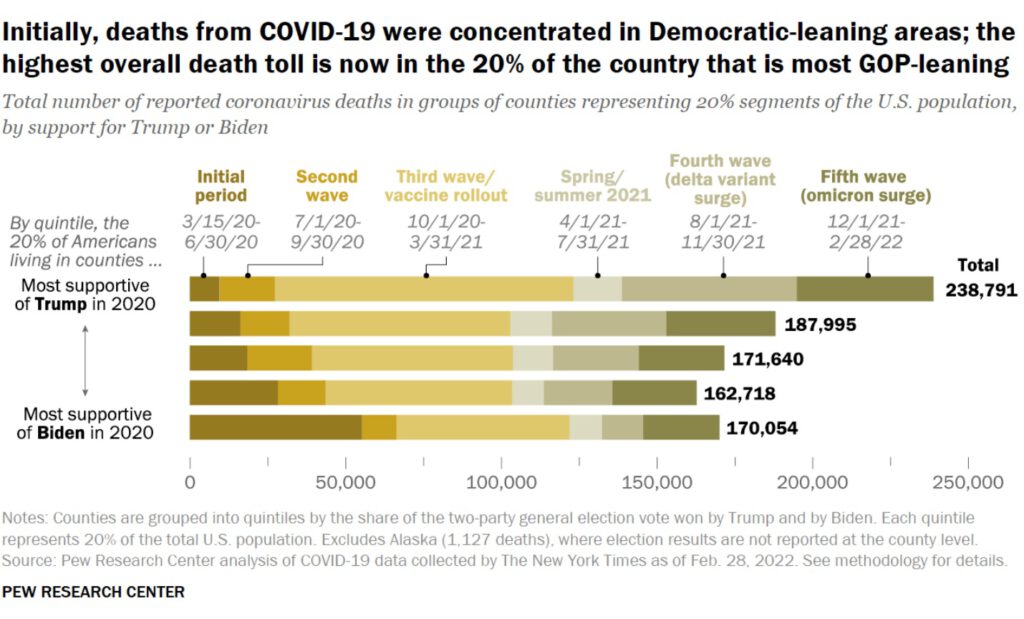 Click on image for full-size view. (Pew Research Center) 5 Mar. 2022. In a special report this week, Pew Research Center describes the changing impacts of Covid-19 throughout the U.S. over the pandemic’s two years, with political preferences now playing a key role. Their data show regions of the U.S. voting more strongly for Donald Trump in 2020 are now bearing the main brunt of Covid-19 deaths. Pew Research Center compiled the data from official reports of Covid-19 deaths in the U.S. collected by the New York Times.
Today’s infographic displays several different interacting factors. The chart shows Covid-19 death rates over the past two years, divided across the top into six time periods reflecting different spikes or lulls in cases. The horizontal bars in the chart are groups of U.S. counties, each representing about one-fifth of the population, stacked from counties with the highest percentage of votes for Donald Trump at the top to those with most votes for Joe Biden at the bottom. Each bar then is divided into color-coded shares of total Covid-19 deaths for each of the six time periods, with the length of each bar representing total numbers of deaths.
Early in the pandemic, the most densely populated regions of the U.S. had the most Covid-19 cases, hospitalizations, and deaths. These areas include major cities, in many cases ports of entry for international travelers, who brought the novel coronavirus as it was then called to the country. In the U.S., larger cities are also more likely to vote for Democrats, and thus early on counties with the highest percentage of Biden voters were also those with the highest Covid-19 death rates.
Over the course of the next two years, the color coded sections of the bars show a shift of Covid-19 deaths from counties more likely to vote for Biden in 2020 to those more likely to vote for Trump. At the same time, the length of the bars increase as the share of vote for Trump increases. As a result, the number of deaths in the strongest Trump-supporting counties reaches nearly 239,000 by the end of February 2022, while the counties with the largest Biden support total about 170,000.
One explanation for this difference is the rate of Covid-19 vaccination in Biden vs. Trump-supporting counties. A separate chart in the report shows a strong correlation between percentage of fully vaccinated adults and share of votes for Joe Biden.
More from Science & Enterprise:
We designed Science & Enterprise for busy readers including investors, researchers, entrepreneurs, and students. Except for a narrow cookies and privacy strip for first-time visitors, we have no pop-ups blocking the page, nor distracting animated GIF graphics. If you want to subscribe for daily email alerts, you can do that here, or find the link in the upper left-hand corner of the desktop page. The site is free, with no paywall. But, of course, donations are gratefully accepted.
* * *
|
Welcome to Science & Enterprise Science and Enterprise is an online news service begun in 2010, created for researchers and business people interested in taking scientific knowledge to the marketplace.
On the site’s posts published six days a week, you find research discoveries destined to become new products and services, as well as news about finance, intellectual property, regulations, and employment.
|











 RSS - Posts
RSS - Posts
You must be logged in to post a comment.